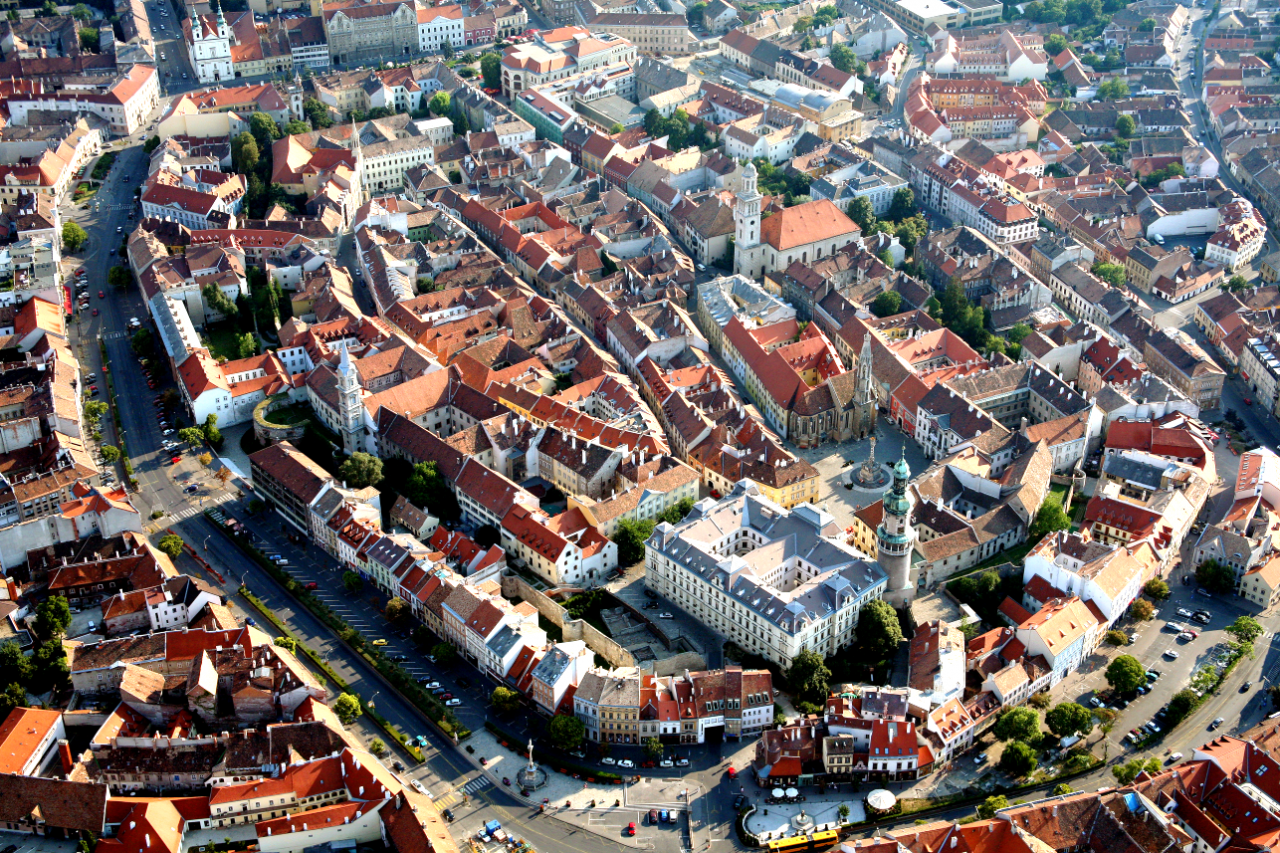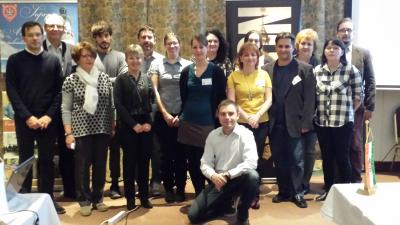
Interview with: Edit Bognar, City Development Office of Sopron Municipality, Dr. Tamas Fodor, Mayor of Sopron and Emoke Zacs, Grants Europe Kft in Budapest interviewed by Wessel Badenhorst Lead Expert of the City Centre Doctor project
“Our city centre is like a beautiful jewellery box. People visit to see the wonderful architecture mostly from the Baroque period and the many historical artefacts going back to its roots as a Roman city. But if you open the box, it is empty…”
This is how Edit Bognár of the City Development Office of Sopron Municipality in Hungary described the inner city of the beautiful city of Sopron at the City Centre Doctor Project kick-off meeting on Wednesday 21 October 2015.
For Edit the success of a city centre is not only its structure and urban form, but how people use, live and enjoy the city centre. Representatives from four other cities – San Dona Di Piave (Italy), Medina del Campo (Spain), Radlin (Poland) and Naas (Ireland) – engaged with Sopron in an exercise to envisage a successful city centre. The vision is that inhabitants will have a pride in their city centre because it is well maintained with amenities to serve people’s needs and it is vibrant with many activities and services from social support to shops to socialising.
The city of Sopron is known in Hungary as the ‘City of Loyalty’ because it is so close to the Austrian border, less than 70 km from Vienna, but yet inhabitants voted in a 1921 to be part of Hungary. Its strategic location together with its fortune to have had continuous development for four centuries with little destruction through wars and conquests, makes it a popular destination to live. Many inhabitants commute daily into Austria for work.
The mayor of Sopron, Dr Tamás Fodor, acknowledges that this popularity manifests itself in expensive house prices (even higher than the average in Budapest) and an influx of approximately 1,000 people every year into a city with an official population of 58,000. The city’s popularity will rise further when a new motorway connecting Vienna with Sopron and Gyor is completed in the next three years. The mobility of inhabitants is already at a level of high connectivity with rail access via the Austrian network and the Vienna international airport only 45 km away.
The situation of Sopron is enviable, but as Dr Fodor points out, it brings its own challenges. Local taxes collected by municipalities in Hungary are at much lower levels than in other European countries and there is a significant level of under-resourcing limiting fulfilment of the municipal responsibilities for services and maintenance. A city centre with mainly heritage value is increasingly becoming a luxury.
Sopron has benefited significantly from investments in urban regeneration co-funded by European structural funds. In the next few months a comprehensive public realm scheme will be completed, providing the city centre with improvements to the circular road with high-end paving, cycle lanes, new street furniture, lighting and public spaces. The scene is set for ‘animation of the space’. But how?
With the call for Action Planning Networks in the URBACT III Programme, the city council of Sopron saw the opportunity to propose a project focused on creative and innovative initiatives to revitalise the city centres of specifically smaller cities with similar challenges as Sopron. Using its networks with other cities in Hungary and central Europe, the city identified and approached the four other smaller cities in the project with a proposal to explore innovation in their city centres so as to assist existing businesses and services to change and become more responsive to people’s needs and to attract new business activity. Ultimately this could improve the tax base and take of municipalities.
The proposal of the five cities was approved for funding by URBACT. The celebration was brief because it meant that the project promoters had to get out of the starting blocks quickly to get the project up and running.
The City Development Office in Sopron Municipality has taken the lead responsibility for the project. To assist in the management of Phase 1, the Office contracted a project manager, Emoke Zacs from Grants Europe Kft in Budapest. Emoke is working with Edit to help the partner cities to establish action groups in each city centre who will consist of key service providers such as local authority senior officials, leaders in the local business community and other agencies who provide for example social services. The city centre action groups will also invite users of the city centre including representatives from local resident groups, student groups and voluntary organisations to become members.
The terms of reference for the action groups were agreed in the Kick-off meeting, which will enable the groups to be recognised as URBACT Local Groups. As such action groups will be eligible to participate in a range of European-level activities to further explore creative practice that stimulate city centre revitalisation.
Dr Fodor is giving strategic leadership to the project. He is encouraging an enlargement of the project to add five or six smaller cities (less than 100,000 population) who have a policy priority to revitalise their city centres. In particular these cities should be in close proximity to large cities where their local economy is intertwined with the larger city. This will enable the partner cities to learn from specific approaches and practices from each other that could be effective to address the resource and management challenges of the partner cities.
Edit and Emoke has made use of the extensive URBACT city network to advertise the expansion of the project. Other partner cities also assisted in getting the word out to their connections. The result was considerable interest in the project. Questionnaires were circulated to interested cities. By the deadline the total number of applications were nearly four times more than the available partnership places. A short list of candidate cities will be visited by Sopron to validate their ‘fit’ into the project. The interest shown from cities in Eastern European and Balkan countries was especially encouraging.
Maybe when you visit one of the project partner cities in three years’ time you will be pleasantly surprised when you open their jewellery box.

